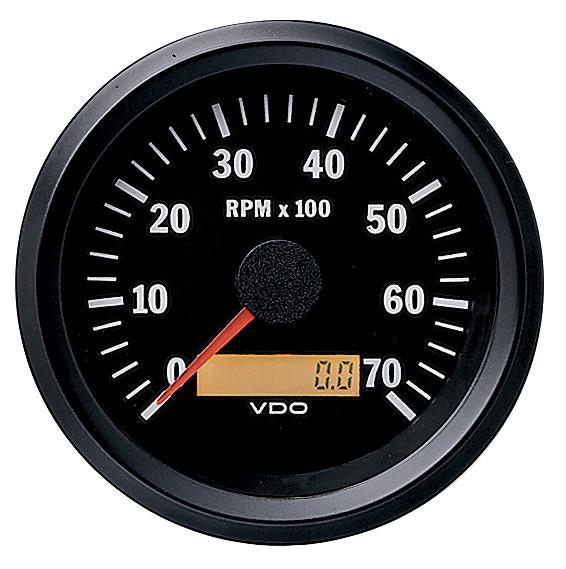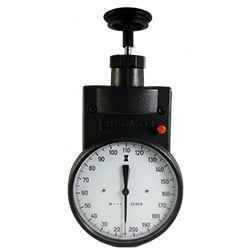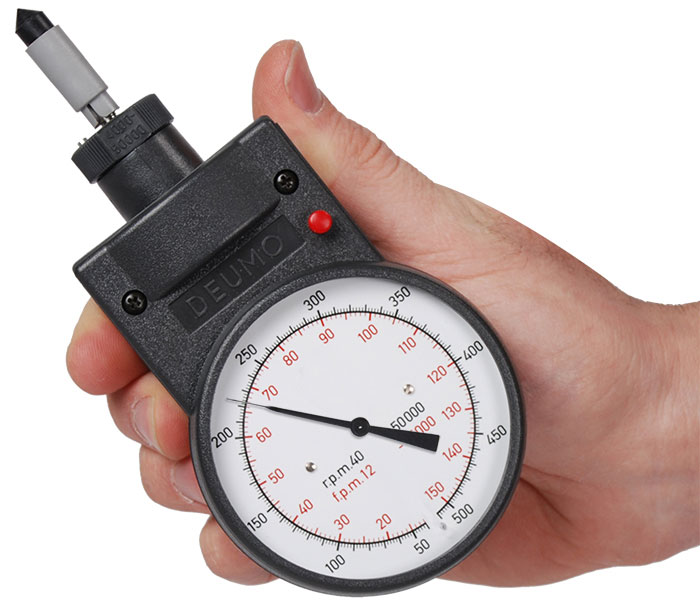Tachometer Acquiring Overview: Functions to Search For and Best Brands
Tachometer Acquiring Overview: Functions to Search For and Best Brands
Blog Article
The Relevance of a Tachometer in Keeping Track Of Engine Speed and Efficiency in Automotive Applications
In the world of auto design, the tachometer stands as an essential tool in the driver's toolbox, supplying a straight home window right into the internal operations of a vehicle's engine. Beyond its function as a plain gauge of transformations per min (RPM), the tachometer functions as a crucial device for fanatics and professionals alike, using real-time understandings right into engine performance and wellness. Understanding the importance of this device goes beyond surface-level observations, delving right into the detailed connection between engine rate, power output, and general driving experience. As we discover the multifaceted function of the tachometer in automotive applications, a deeper gratitude for its influence on vehicle characteristics and effectiveness begins to arise.
Relevance of Keeping An Eye On Engine RPM
Keeping an eye on engine RPM, or changes per minute, is an essential facet of automobile upkeep and efficiency examination. Engine RPM directly associates with the rate at which the engine's crankshaft rotates, suggesting just how rapidly the engine is running - tachometer. By keeping track of RPM, mechanics can analyze the health and wellness of the engine, detect possible issues, and fine-tune performance. An uncommon RPM analysis may indicate problems such as engine misfires, damaged stimulate plugs, or problems with the gas distribution system. Continually high RPM readings could suggest hostile driving practices or the need for a higher gear change to improve gas efficiency.
Furthermore, checking engine RPM is necessary for efficiency analysis in auto racing and high-performance vehicles. Maintaining ideal RPM levels is essential for accomplishing peak power result and acceleration. Racers frequently make use of tachometers to guarantee they are operating within the ideal RPM variety for maximum performance. In summary, keeping an eye on engine RPM is not only vital for finding concerns yet also for maximizing engine performance in numerous vehicle applications.

Benefits of Real-Time Data
In automobile applications, real-time data plays an essential duty in giving instant understandings right into the efficiency and problem of the automobile. By continually keeping an eye on numerous parameters such as engine rate, temperature, fuel consumption, and much more, real-time data uses various benefits that add to improved effectiveness and security on the roadway.
Furthermore, real-time data facilitates efficiency optimization by providing prompt comments on driving behaviors and engine effectiveness. Drivers can adjust their habits in real-time based on this information to attain much better gas economic climate and lengthen the life expectancy of their lorry.

Furthermore, real-time information plays an important function in modern automobile diagnostics, allowing technicians to swiftly detect and address breakdowns. This brings about decreased downtime, reduced maintenance expenses, and inevitably, improved overall lorry reliability and longevity (tachometer). By harnessing the power of real-time information, auto stakeholders can make enlightened decisions that positively affect both the performance and durability of the automobile
Impact on Gear Shifts
Reliable gear shifts in automotive applications considerably influence overall efficiency and driving experience. The home tachometer plays an essential function in maximizing equipment changes by providing real-time engine speed data to the chauffeur. When approaching the redline on the tachometer, it signifies the motorist to upshift to stop over-revving the engine and triggering possible damages. On the other hand, downshifting at the ideal minute can assist preserve the engine in its power band, making sure responsive velocity when required.
Additionally, the tachometer help in accomplishing smoother equipment shifts, especially in hands-on transmissions. By keeping an eye on engine speed, motorists can carry out gear shifts at the optimal RPM range, reducing snagging activities and decreasing endure the transmission elements. This precision in gear changes not only boosts driving comfort but also contributes to sustain performance.
Enhancing Gas Effectiveness
Given the critical duty the tachometer plays in maximizing equipment shifts for performance and engine wellness, it straight contributes to taking full advantage of fuel performance in auto applications. By supplying real-time comments on engine speed, the tachometer aids chauffeurs in maintaining the most effective RPM array for fuel economy. When vehicle drivers look at here now regularly check the tachometer and readjust their driving behaviors appropriately, they can avoid unneeded gas consumption brought on by over-revving or carrying the engine.
Furthermore, the tachometer helps motorists identify one of the most fuel-efficient gear to be in at any provided moment, stopping the engine from functioning tougher than required. This is especially crucial during acceleration and travelling, where being in the right gear can dramatically affect gas effectiveness. In addition, the tachometer can notify motorists to possible mechanical problems that could be negatively impacting fuel economic climate, such as a sliding clutch or a clogged up air filter. In final thought, the tachometer offers as an important device in enhancing fuel performance by promoting ideal driving habits and identifying areas for enhancement in the lorry's performance.

Taking Full Advantage Of Engine Long Life
The tachometer's role in keeping track of engine rate and efficiency is instrumental in guaranteeing the durability of auto engines. By making use of the tachometer efficiently, chauffeurs can optimize engine longevity via mindful RPM monitoring. Regularly revving an engine too expensive can bring about extreme wear and tear on crucial elements, such as the pistons, valves, and bearings. Gradually, this can lead to reduced engine efficiency and prospective breakdowns. Keeping an eye on the tachometer permits motorists to stay within the suggested RPM array for their car, stopping unnecessary stress on the engine and expanding its lifespan.

Conclusion
To conclude, the tachometer plays an important role in keeping an eye on engine speed and efficiency in automotive applications. By supplying real-time data on RPM, it permits for efficient equipment changes, boosted fuel performance, and optimized engine durability. This device is important for keeping ideal engine performance view publisher site and making sure the total performance of a lorry.
Report this page